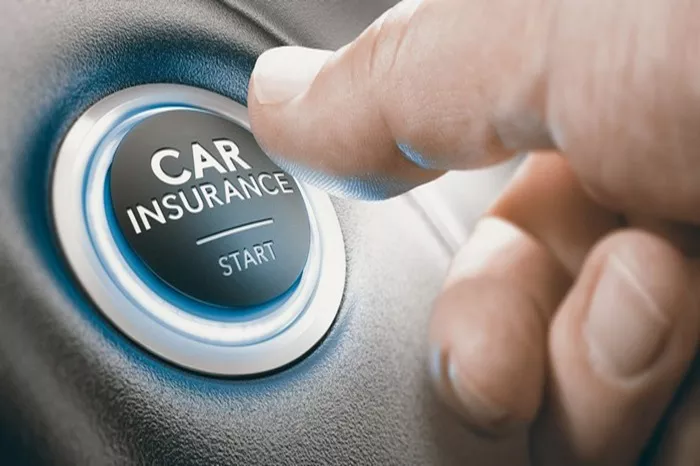Filing a claim on your car insurance can feel overwhelming, especially if you’ve never done it before. Whether you’ve been involved in an accident, had your vehicle damaged by a storm, or experienced theft, knowing how to navigate the claims process is crucial. This guide will take you through the steps to file a car insurance claim, explain what to expect, and provide tips to help you get the compensation you deserve.
Chapter 1: Understanding Car Insurance Claims
What is a Car Insurance Claim?
A car insurance claim is a request for compensation made to your insurance company after an incident that causes damage to your vehicle or results in liability to others.
Claims can arise from various situations, including:
Accidents: Collisions with other vehicles or objects.
Theft: Loss of your vehicle due to theft.
Vandalism: Damage caused intentionally to your vehicle.
Natural Disasters: Damage from events like floods, hail, or storms.
Types of Car Insurance Claims
Understanding the types of claims can help you determine what kind of coverage you need and how to proceed:
Liability Claims: If you are at fault in an accident, this type of claim covers damages to the other party’s vehicle or medical expenses.
Collision Claims: These claims cover damage to your own vehicle resulting from a collision, regardless of fault.
Comprehensive Claims: This type of claim covers non-collision-related incidents, such as theft or damage from natural disasters.
Personal Injury Protection (PIP) Claims: These claims cover medical expenses for you and your passengers after an accident.
Chapter 2: Preparing to File a Claim
Ensure Safety First
Before you file a claim, your safety and the safety of others involved is the top priority.
If you’ve been in an accident:
Check for Injuries: Assess yourself and others for injuries. Call emergency services if anyone is hurt.
Move to Safety: If possible, move vehicles to a safe location to prevent further accidents.
Gather Essential Information
Collecting the right information at the scene of the incident is crucial for a smooth claims process.
Here’s what you should gather:
Personal Information: Your name, address, phone number, and insurance policy number.
Other Party Information: Names, contact details, insurance information, and vehicle details of others involved.
Witness Information: Contact details of any witnesses to the accident.
Photos: Take photos of the accident scene, vehicle damages, license plates, and any relevant road signs or signals.
Notify Your Insurance Company
Contact your insurance company as soon as possible after the incident. Most insurers have a 24/7 claims hotline.
When you call:
Be Prepared: Have all the information you collected ready to share.
Provide Details: Explain what happened, including the date, time, and location of the incident.
Chapter 3: Filing the Claim
How to File a Claim
You can typically file a claim in several ways, depending on your insurer’s policies:
Online: Many insurance companies allow you to file claims through their website or mobile app. This is often the quickest method.
Phone: Call your insurance company’s claims department to report the incident and file your claim.
In-Person: If you prefer, you can visit a local insurance office to file your claim in person.
Information to Provide When Filing
When filing your claim, be ready to provide:
Claim Type: Specify whether it’s a collision, comprehensive, or liability claim.
Accident Details: Share a detailed account of the incident, including how it happened and any contributing factors.
Documentation: Submit any relevant documentation, such as police reports or photos of the damage.
Follow Up on Your Claim
After filing your claim, it’s essential to stay in touch with your insurance adjuster. They will guide you through the process and may request additional information or documentation.
Keep Records: Maintain a file with all correspondence, claim numbers, and documents related to your claim.
Be Responsive: Respond promptly to any requests for information from your insurer.
Chapter 4: The Claims Investigation Process
What Happens After You File a Claim?
Once you file your claim, your insurance company will begin an investigation.
This process may include:
Assigning an Adjuster: Your insurer will assign a claims adjuster to your case. This person will evaluate the damage and determine the amount of compensation.
Inspecting the Damage: The adjuster may inspect your vehicle and review the evidence you provided.
Reviewing Reports: They will also review any police reports or witness statements associated with the incident.
Timeframe for Claims Investigation
The timeframe for settling a claim can vary based on several factors, including:
Complexity of the Claim: More complicated claims involving multiple parties or severe damages may take longer.
Availability of Information: Delays in obtaining police reports or witness statements can extend the process.
In general, straightforward claims can be settled within a few weeks, while more complex cases may take longer.
Chapter 5: Settlement Offers and Negotiations
Receiving a Settlement Offer
After the investigation is complete, your insurer will provide a settlement offer based on the damage and your policy coverage.
Here’s what to expect:
Understanding the Offer: Review the offer carefully to ensure it covers the necessary repairs and any other related expenses.
Breakdown of Costs: The offer should include a breakdown of costs for repairs, medical expenses, and any other damages.
Negotiating the Offer
If you believe the settlement offer is too low, you can negotiate with your insurer.
Here’s how:
Gather Evidence: Collect supporting documentation, such as repair estimates, medical bills, and any additional costs incurred due to the accident.
Present Your Case: Contact your claims adjuster and present your evidence clearly, explaining why you believe a higher settlement is justified.
Be Patient: Negotiations can take time, so be prepared for back-and-forth discussions.
Accepting the Offer
Once you’re satisfied with the settlement offer:
Review the Agreement: Ensure you understand the terms of the settlement before accepting it.
Complete Necessary Paperwork: You may need to sign documents to finalize the settlement.
Chapter 6: Completing Repairs and Finalizing Your Claim
Getting Your Vehicle Repaired
After accepting the settlement offer, you can proceed with repairs:
Choosing a Repair Shop: You can typically choose your repair shop, but check your policy for any restrictions.
Submitting Repair Invoices: After repairs are completed, submit any invoices to your insurer for reimbursement if applicable.
Finalizing Your Claim
Once repairs are completed and all necessary documentation is submitted:
Confirm Completion: Check with your claims adjuster to confirm that all aspects of your claim have been processed.
Keep Records: Maintain a complete record of your claim, including copies of all correspondence and documents.
See Also: How Does Excess Work in Car Insurance?
Chapter 7: Common Questions About Car Insurance Claims
How long do I have to file a claim after an accident?
Most insurers require you to file a claim within a reasonable time frame, typically within 30 days of the incident. Check your policy for specific deadlines.
Will my insurance rates go up after filing a claim?
Filing a claim may lead to higher premiums, especially if you are deemed at fault. However, not all claims affect your rates, particularly if they are for non-fault accidents.
What should I do if my claim is denied?
If your claim is denied, review the denial letter for the reasons. You can appeal the decision by providing additional evidence or documentation that supports your claim.
Can I file a claim for minor damages?
You can file a claim for minor damages, but consider the cost of your deductible versus the repair costs. If the repair costs are less than your deductible, it may not be worth filing a claim.
What if the other driver is uninsured?
If the other driver is uninsured, you can file a claim under your uninsured motorist coverage if you have it. This coverage protects you from losses caused by uninsured drivers.
Chapter 8: Tips for a Smooth Claims Process
Be Prepared
Before an accident occurs, familiarize yourself with your insurance policy and understand what is covered. Keep your insurance card in your vehicle for easy access.
Stay Calm and Polite
During the claims process, remain calm and polite, even if you feel frustrated. Clear communication can help resolve issues more effectively.
Know Your Rights
Understand your rights as a policyholder.
You have the right to:
- Receive a fair settlement based on your policy
- Appeal a claim denial if you believe it is unjustified
- Choose your repair shop (unless your policy states otherwise)
Document Everything
Keep thorough records of all communications and documents related to your claim. This includes dates, times, names of representatives, and details of conversations.
Follow Up Regularly
If you don’t hear back from your insurer within a reasonable timeframe, follow up to check on the status of your claim.
Conclusion
Filing a claim on your car insurance doesn’t have to be a stressful experience. By understanding the process, gathering the necessary information, and following the steps outlined in this guide, you can navigate the claims process with confidence. Remember to stay organized, communicate clearly with your insurer, and keep thorough records of all interactions related to your claim.
Whether you’re dealing with a minor fender bender or a more serious incident, knowing how to file a claim effectively will help you get back on the road as quickly as possible.
Related Topics:






















